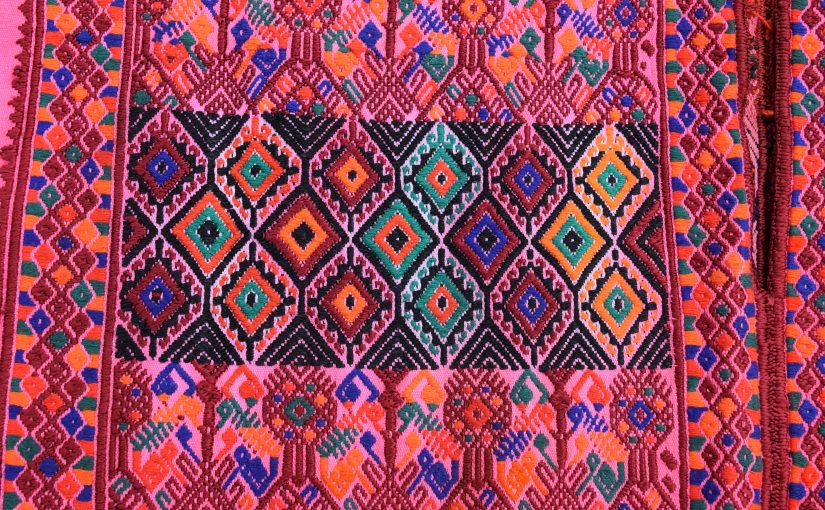Adjectives modify nouns or add descriptive information about a noun or noun phrase. There are very few adjectives in K’iche’. They usually have the form CVC. Positionals, perfective verb forms, and nouns are used to modify nouns as well.
*This is a two part unit. You will find the vocabulary and exercises in unit 29.
- Adjectives may be attached directly to the noun (attributive), like in:
fierce
The fierce dogs
Or they serve as the predicate of a stative phrase (predicative):
new
My huipil is new.
Sometimes, ideas typically expressed by adjectives in English, require intransitive verbs or stative phrases in K’iche’:
Wa’ we q’ij, nim ub’antajik.
This day, big its-importance
This is an important day.
- Adjectives as attributes
In K’iche’ adjectives used as attributives precede the noun they modify. An attributive vowel a is suffixed to the adjective before the head noun.
nim ‘big’ + ja ‘house’=
saq ‘white’ + ja ‘house’=
Itzel ‘evil’ + winaq ‘person’=
- Nouns as attributes of other nouns
When nouns are attributes of other nouns, they are linked with a.
kem ‘weaving‘ + tz’ib’ ‘write’ =
kej ‘horse’ + ch’ich’ ‘metal thing’ =
- Possessed compound nouns
The “adjective-a noun” compound is a single word; therefore, possessive pronouns attach to the first element of the compound.
- Plural attributive adjectives
In plural nouns with an attribute, the particle taq is added between attribute and noun. The attribute keeps the vowel –a.
A few adjectives have irregular plural forms. A glottal stop is inserted when part of the predicate.
| Singular | Plural/Attributive | Plural/Predicative |
| nimaq | nima’q | |
| pimaq | pima’q | |
| chomaq | choma’q | |
| nich’aq | nich’a’q | |
| nitz’aq | nitz’a’q | |
| ch’utiq | ch’uti’q |
The particle taq is required despite the plural marking on the adjective. Such double plural marking is not uncommon in K’iche’.
the small dogs
- Adjectives as predicates
As we have seen before, adjectives can be predicates:
The rabbits are small.
My huipil is new.
Reminder: Placement of the particle taq
To pluralize nouns and modifiers, the particle taq is inserted between modifier and noun, even when the modifier is already in the plural:
When the adjective is in predicate position, the particle taq precedes the subject.

